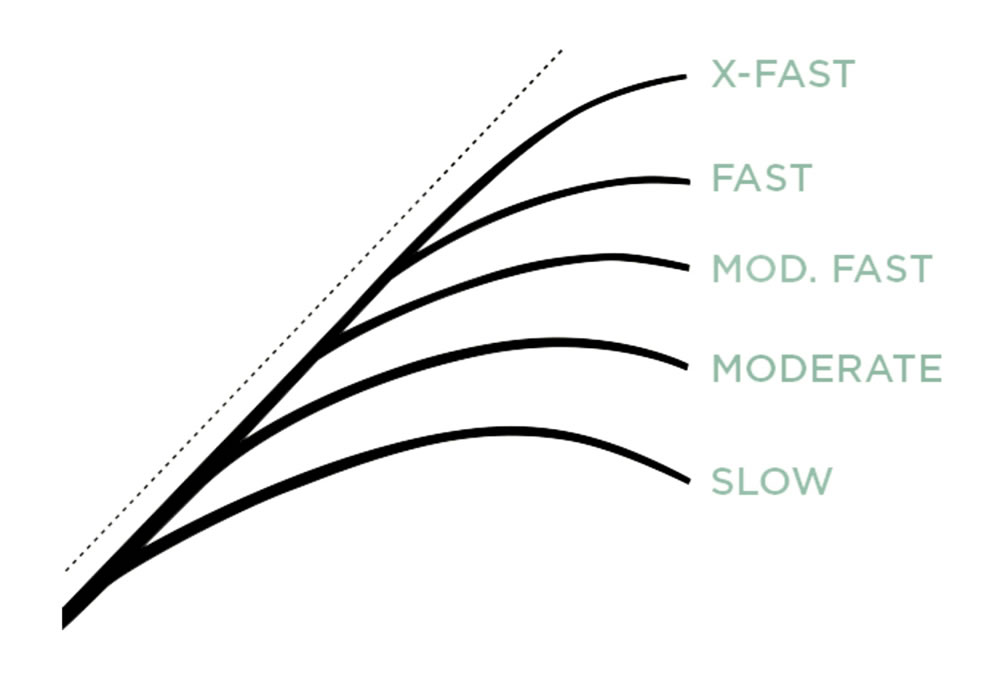Rod Action vs. Rod Power
By Shane Beilue - July 12, 2021
Rod action is often referred to as the "speed of the tip" or sometimes the "taper of the rod", with terminology such as "fast tip", "ultra-fast", etc. This is an indication of how quickly or slowly a rod tip, defined as roughly the last 18 inches of the rod, returns back to its original position when displaced. The faster the tip, the stiffer that last few inches of the rod will be; therefore, think of matching the rod's action to the lure that you intend to cast. For instance, when tossing light topwater lures or small jerkbaits, a lighter action rod, soft tipped rod, will flex more in the back cast, propelling that light lure easier than a heavier action, faster tipped rod. Conversely, you can overpower a soft-tipped rod with a heavier lure like a big swimbait or ¾ oz spinnerbait, so having a sense of how you plan to use the rod is helpful prior to purchase. The manufacturer will usually print the range of intended lure weights on the rod blank.

Rod power is a reference to the rod's overall flex from just above the handle through the rod's mid-section. Rod power is often designated with a numerical value (6 power, 8 power, etc.) or "heavy", "medium/heavy", etc. to indicate the amount of stiffness throughout the rod blank. Think of matching the rod's power to the type of cover that you'll be fishing, and even the weight of line you will employ. For example: fishing thick, brushy cover will likely require a heavy powered rod to leverage the fish out away from the cover with strong line. Fishing a drop shot with 8# test line, on the other hand, requires a softer powered rod to prevent the line from breaking under the surge of a heavy fish.
Finally, it's important to understand there is no industry standard for how various manufacturers label their rod's action and power. One makers "heavy action" is another's "medium/heavy"; therefore, the best way to determine if a specific rod is right for you is to hold it in your hands and gently test the bend and flex in the store to get a sense of how it compares to like models. When you do find the next "right rod", it can make a long day on the water almost effortless.













